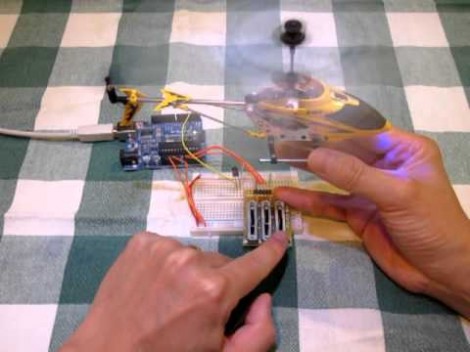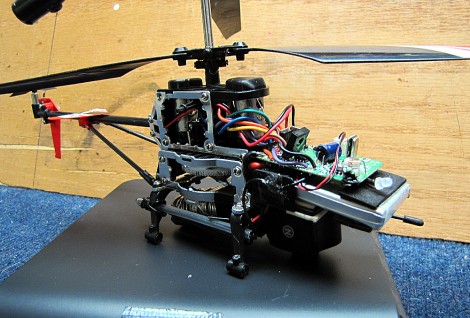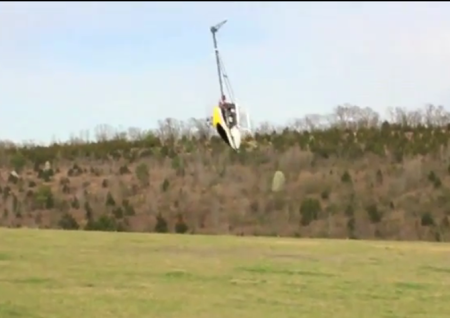
[Jack Crossfire] took one of those inexpensive indoor helicopters and made it autonomous. He didn’t replace the hardware used for the helicopter, but augmented it and patched into the remote control to make a base station.
The position feedback is provided in much the same way that the Wii remote is used as a pointing device. On the gaming console there is a bar that goes under the TV with two IR LEDs in it. This is monitored by an IR camera in the Wii remote and used to calculate where you’re pointing the thing. [Jack’s] auto-pilot system uses two Logitech webcams with IR filters over the sensors. You can see them mounted on the horizontal bar in the cutout above. The helicopter itself has an IR LED added to it that is always on. The base station follows this beacon by moving the cameras with a pair of servo motors, calculating position and using it when sending commands to the remote control’s PCB.
Don’t miss the demo video of the rig after the break.
Continue reading “Autonomous Helicopter Works Like A Wii Remote”





















